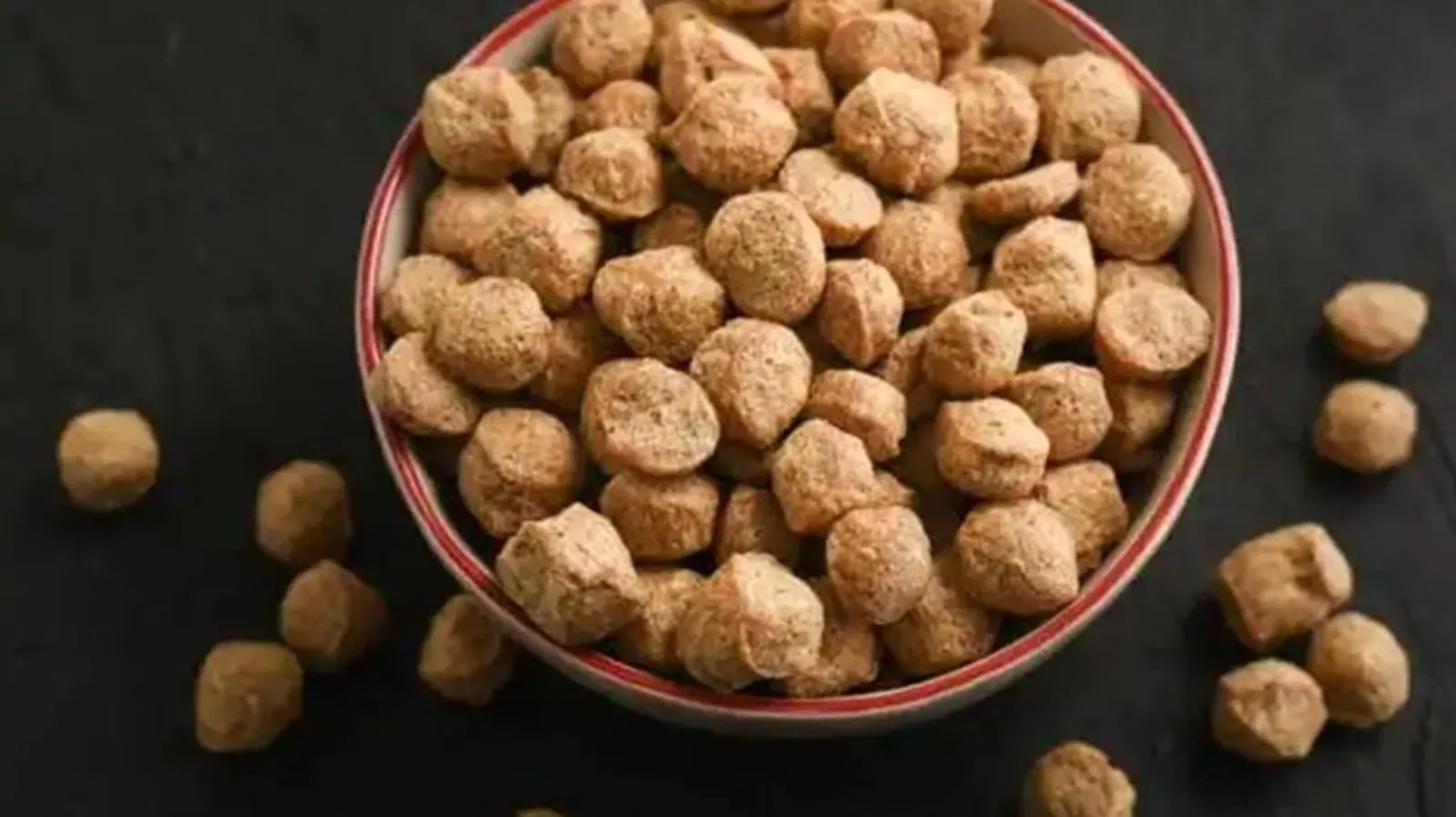TVP is sometimes known as soy chunks, textured soy protein, or soy meat. In the world of vegans or vegetarians, textured vegetable protein (TVP) is a bit of a celebrity. It’s known for its meat-like texture and versatility in the kitchen. But like any star, it has its shining moments and its share of controversies.
High in Protein: TVP is a heavyweight when it comes to protein content. It’s made from soy flour, which is packed with protein, making it a fantastic option for vegetarians and vegans looking to up their protein intake.
Low in Fat: If you’re watching your waistline, TVP might be your new best friend. It’s low in fat and cholesterol, which is great news for heart health
Rich in Nutrients: Besides protein, TVP is also a good source of essential nutrients like magnesium, phosphorus, iron, and B vitamins
Versatile: Its neutral taste means it can take on any flavor you throw at it. From vegan sausages to taco ‘meat,’ TVP can do it all
Sustainable: As a plant-based product, TVP is more sustainable than animal protein, which is a win for the environment
However, there are a number of issues that are experienced by a few people, for example not everyone’s gut agrees with TVP. It can cause indigestion and bloating for some, especially those with sensitive stomachs. Soy is also a common allergen, and since TVP is made from soy flour, it’s off-limits for those with soy allergies. It’s also a byproduct of soy processing plants that produce things like Soybean oil. Hexane is often used along with high heat extrusion process to manufacture TVP. So this will classify it as a highly processed food.
There’s some debate about soy’s impact on hormone levels. Frequent consumption of soy products, including TVP, could potentially affect the body’s hormone production. Research is not conclusive but this may have been something to do with the fact that over 90% of soybeans in the United States and across India are GMO, and due to cross-pollination by wind and insects, the remaining 10% of non-GMO soy isn’t guaranteed to be non-GMO either. Just to be safe, I won’t advise large consumption of TVP by young children.
The Verdict
TVP is a bit of a mixed bag. It’s a protein-packed, versatile food item that’s kind to the planet. But it’s not without its downsides, especially when it comes to digestion and processing. Like any food, it’s best enjoyed in moderation and as part of a balanced diet. I’d say that if you are a mature adult and do not have digestive or allergic challenges with Soy in general, TVP can be a pretty good source of plant protein. Just watch for the amount.
